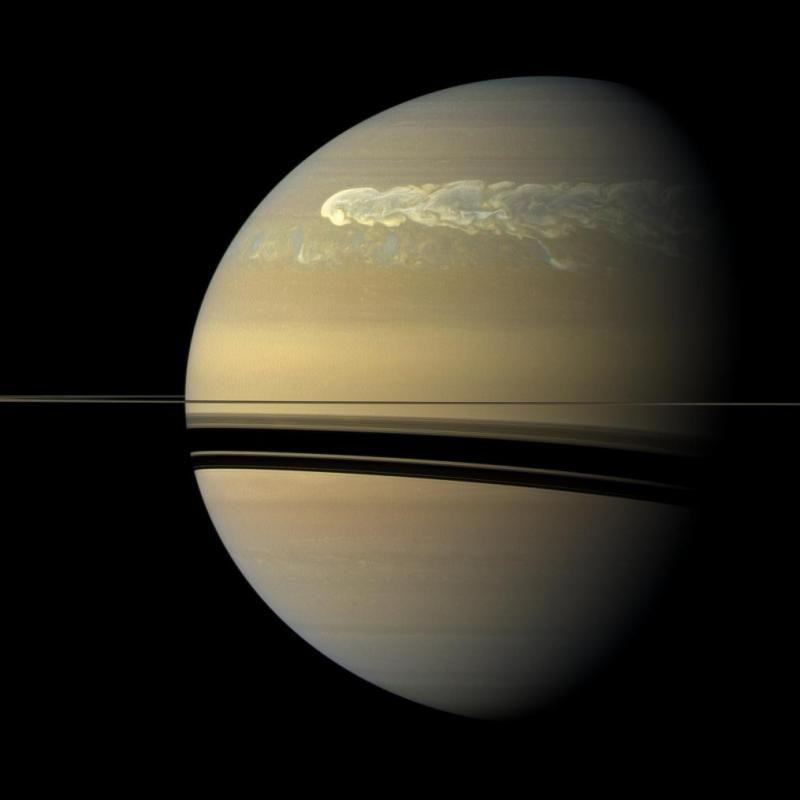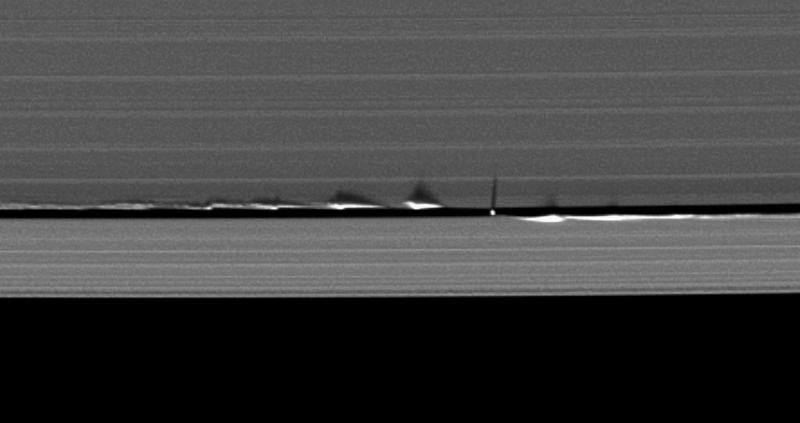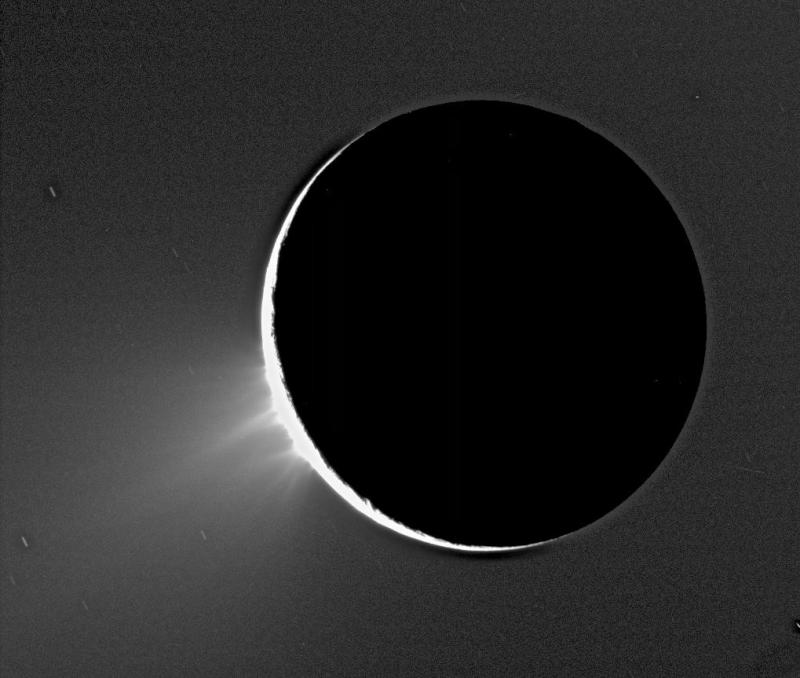2017 September 14
The end of the Cassini mission
On 2017 September 15, one of the most successful planetary missions will come to an end, when the Cassini spacecraft plunges into Saturn’s atmosphere. This mission to study the Saturn system (designated Cassini-Huygens) has been a joint project between NASA, the European Space Agency (ESA) and the Italian Space Agency (ISA). Earlier missions to Saturn (i.e. Pioneer 11 plus Voyagers 1 and 2) were fly-by missions but Cassini-Huygens would be the first to go into orbit around this planet.
The mission comprised an orbiter spacecraft (designated as Cassini) and a Titan lander (designated as Huygens) which was carried on the orbiter. Cassini carried a number of payloads to study the Saturnian system in wavelengths from ultra violet to infra-red. There were also payloads to study magnetic fields, particles, and plasma waves, a radar and a radio science subsystem. In addition, signals from the various antennas were used to conduct experiments, such as testing Einstein’s theory of relativity. The Huygens probe carried payloads to study Titan’s atmosphere, its winds and its surface plus an imaging system.
Cassini–Huygens was launched on October 15, 1997, from Cape Canaveral by a Titan IVB/Centaur rocket. It subsequently made flybys of the Earth, Venus and Jupiter to use gravitational assist manoeuvres to reach Saturn. It made studies of Jupiter during its flyby of this planet. It was inserted into orbit around Saturn on 1 July 2004.
The planned mission duration was to be four years lasting from 2004 until 2008. However a mission extension was granted to study the planet around the time when the rings were edge-on to the Sun (the Cassini Equinox Mission). This extended from 2008 until 2010. A further mission extension was granted from 2010 until 2017 (the Cassini Solstice Mission).

A major storm occurs in Saturn’s atmosphere approximately every Saturnian year and these are sometimes designated as Great White Spots. The last one started in early December 2010 in the planet’s northern hemisphere. and Cassini was able to follow the evolution of this storm in great detail as activity spread in a latitude band around the planet. The source spot was shown to be a vortex and the RPWS detected SED bursts over a period greater than 250 days.
The orbiter sent back many spectacular and indeed beautiful images of the ring system showing their complex structure, including ringlets and spokes. Some interesting results occurred when Cassini imaged to rings when they were edge onto the sun. Material outside of the ring plane cast shadows onto the rings sometimes revealing small embedded satellites and other structures.

Cassini discovered a number of new satellites and was able to image many of the satellites in great detail including the almost 20 km high equatorial ridge on Iapetus. Further the Huygens probe was deployed from Cassin on 24 December 2004 and descended through the thick atmosphere to successfully land on Titan at about 12:43 UT on 14 January 2005. Images were generated both during the descent and from the surface.


Probably the most important result concerning the satellites was the likelihood of subsurface oceans below Enceladus, Titan and possibly Dione. This in turn raises the intriguing possibility of life beneath these satellites.
The final phase of the mission was designated the ‘Grand Finale’
With depleting propellant, there would come a time that the spacecraft could not be controlled. To ensure that the spacecraft would not crash into and then contaminate any of the satellites, it was decided to change its orbit to one that would result in a burn-up in Saturn’s atmosphere.
This was achieved by the use of a close pass to Titan during April 2017 which changed its orbit to one that allowed it to pass between the planet and the rings. 22 orbits later it would crash into the planet on 15 September 2017. The NASA website showed that loss of spacecraft contact with the Earth occurred at 04:55 Pacific Daylight Time or 11:55 UT.
This mission has left a rich legacy of data that will keep planetary scientists busy for many years to come and potentially allow more discoveries to be made.
As Cassini’s glorious mission in Saturnian orbit comes to an end, we celebrate by posting these three compilations prepared by Dr John Rogers showing how its view of the planet and its ring system has changed over half a Saturnian year.
Given the success of this mission, scientists are keen for another mission to Saturn. When will this occur? Only time will tell.
| The British Astronomical Association supports amateur astronomers around the UK and the rest of the world. Find out more about the BAA or join us. |
